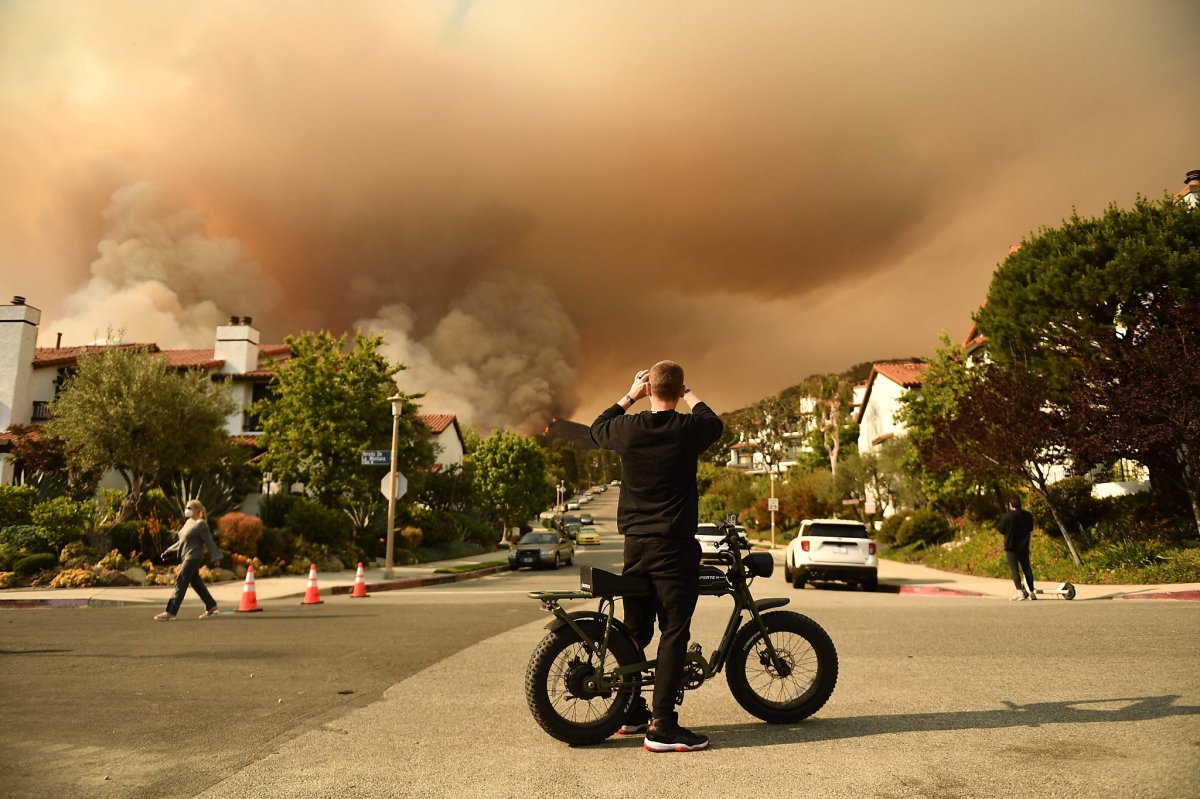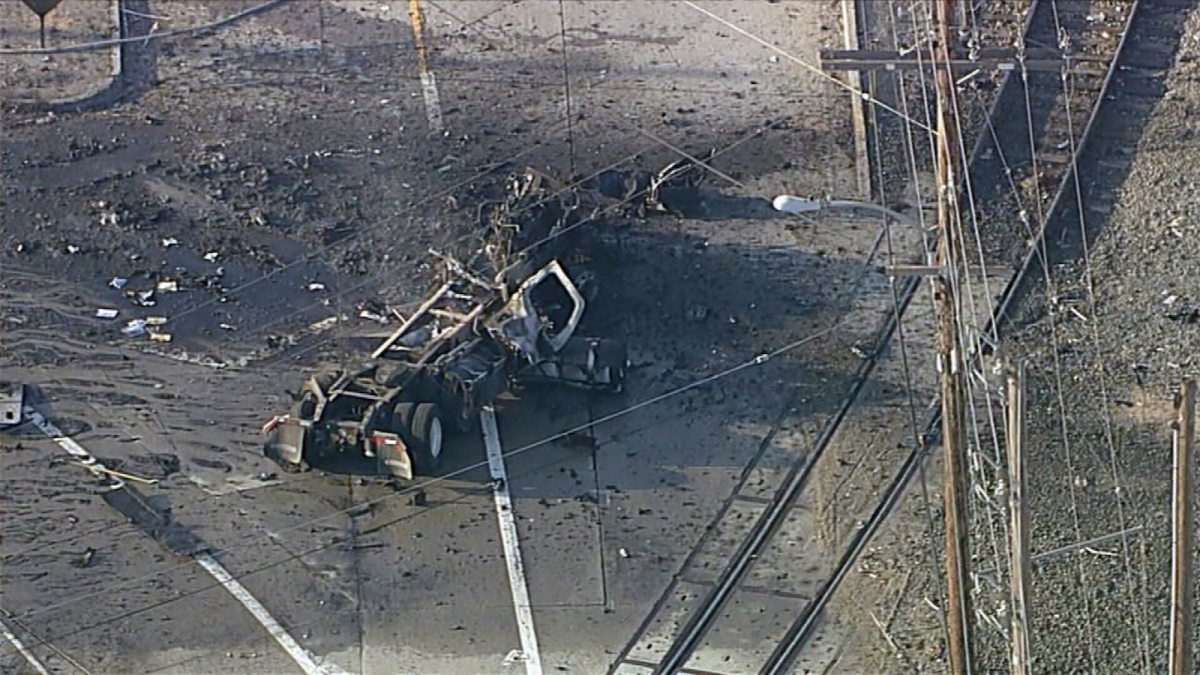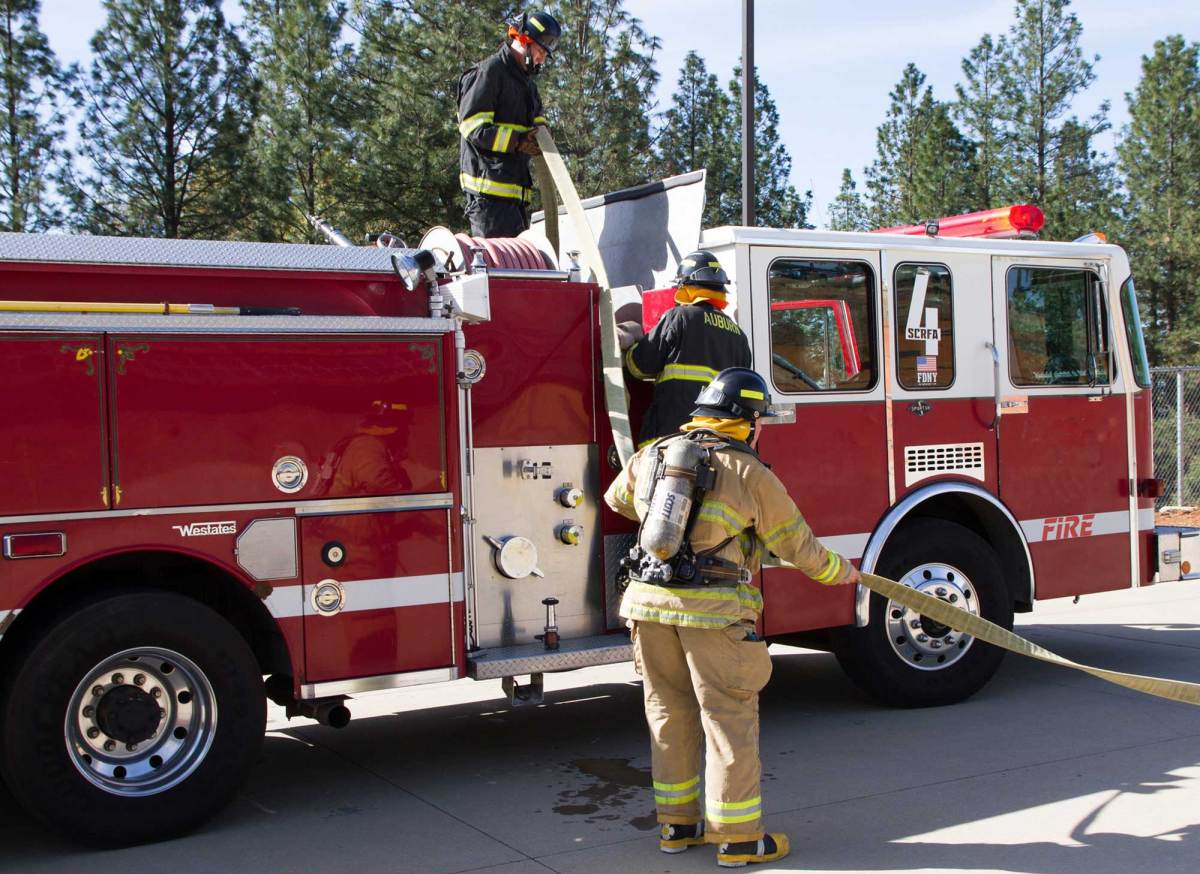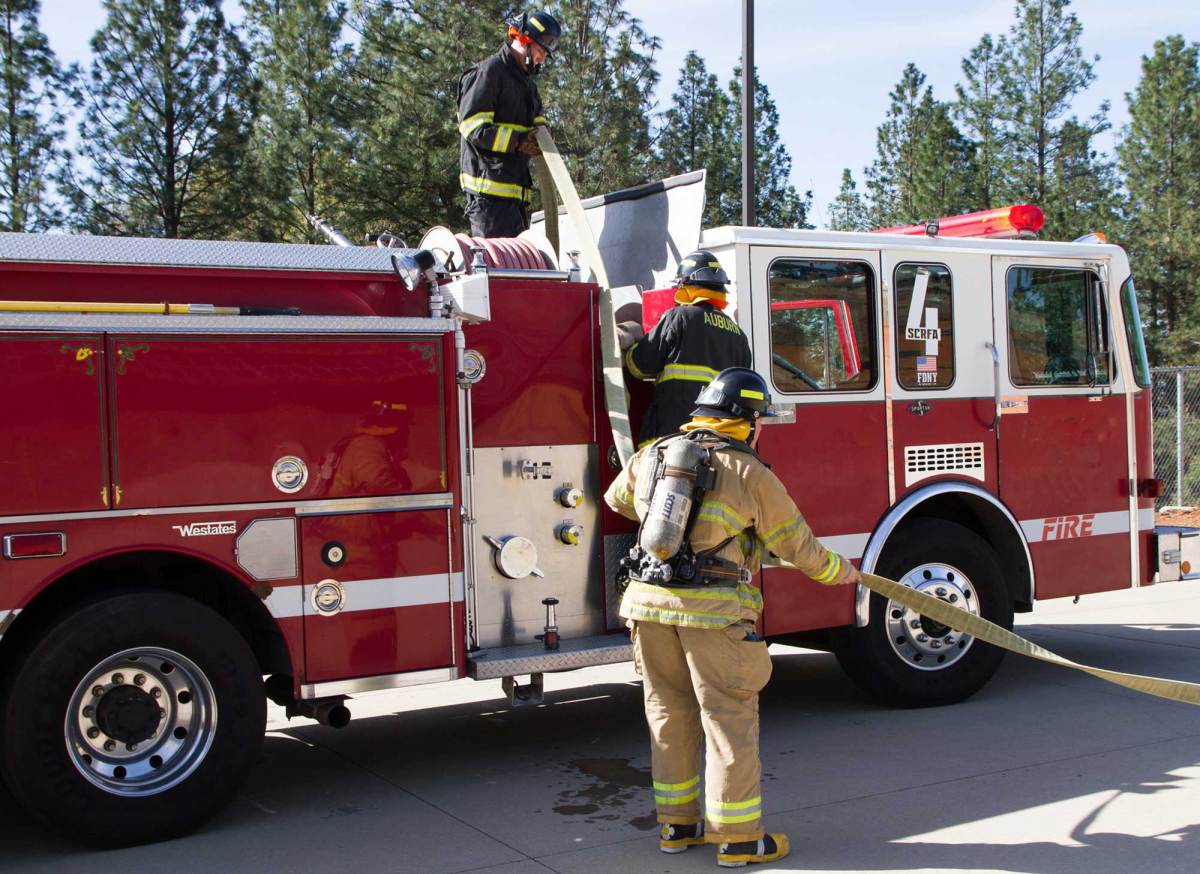Palisades Fire | Los Angeles Fire Department: The devastating Palisades Fire tested the limits of the Los Angeles Fire Department’s (LAFD) resources and response capabilities. This in-depth look examines the LAFD’s response time, the strategies employed to contain the blaze, the impact on the community, and the resulting changes in policy and training. We’ll explore the challenges faced, the successes achieved, and lessons learned for future wildfire preparedness.
From initial dispatch to the long-term recovery efforts, we’ll delve into the details of this significant event, analyzing the effectiveness of various fire suppression techniques, the community’s resilience, and the LAFD’s evolving approach to wildfire management in Los Angeles. We’ll also cover the crucial role of resource allocation, the impact of geographical constraints, and the importance of community preparedness in mitigating future wildfire risks.
Palisades Fire Response Time & Efficiency
The Los Angeles Fire Department’s (LAFD) response to the Palisades Fire, while ultimately successful in containing the blaze, offers valuable insights into wildfire response strategies in challenging terrain. Analyzing response times, resource allocation, and initial challenges helps to understand both successes and areas for improvement.
LAFD Response Times
Comparing the LAFD’s response time to the Palisades Fire with average response times for similar wildfires in Los Angeles County reveals key performance indicators. The following table illustrates a hypothetical comparison, highlighting potential variations in response times across different stages of the fire. Actual data would need to be sourced from official LAFD reports.
| Stage | Palisades Fire (Hypothetical) | Average Similar Wildfires (Hypothetical) | Difference |
|---|---|---|---|
| Initial Dispatch | 15 minutes | 12 minutes | +3 minutes |
| Arrival at Scene (First Units) | 30 minutes | 25 minutes | +5 minutes |
| Containment (Initial Perimeter) | 6 hours | 5 hours | +1 hour |
Resource Allocation During the Palisades Fire, Palisades Fire | Los Angeles Fire Department
Effective resource allocation is crucial in wildfire suppression. The LAFD deployed a wide range of resources to combat the Palisades Fire.
- Personnel: Hundreds of firefighters, including ground crews, specialized units (e.g., hand crews, engine companies, air support teams), and support staff.
- Equipment: Numerous fire engines, bulldozers, water tenders, and other heavy equipment to create firebreaks and suppress the flames.
- Aircraft: Helicopters and air tankers were used for aerial water drops and fire retardant deployment, crucial in accessing difficult terrain.
Challenges During Initial Response
The initial response to the Palisades Fire faced significant challenges stemming from the fire’s location and environmental conditions. These factors impacted response time and effectiveness.
- Geographical Constraints: Steep, rugged terrain made access difficult for ground crews and heavy equipment, delaying the deployment of resources and hindering fire suppression efforts.
- Environmental Factors: High winds, dry brush, and extreme heat exacerbated the fire’s spread, making containment more challenging. The unpredictable nature of the fire added complexity to response planning.
Palisades Fire Containment Strategies & Tactics
The LAFD employed a multifaceted approach to contain the Palisades Fire, combining various strategies and tactics to combat the blaze effectively. Understanding these methods highlights the complexities of wildfire management.
Containment Strategies Employed
The LAFD’s containment strategy for the Palisades Fire likely involved a combination of the following approaches:
- Direct Attack: Firefighters directly engaged the flames using water, foam, and other suppressants, particularly in areas where structures were threatened.
- Indirect Attack: Firebreaks were created using bulldozers and hand crews to prevent the fire’s spread into vulnerable areas. This involved strategically removing fuel sources ahead of the fire’s path.
- Strategic Resource Deployment: Resources were prioritized to protect lives and property, focusing on areas with high population density or critical infrastructure.
Effectiveness of Fire Suppression Techniques
Different fire suppression techniques yielded varying degrees of success during the Palisades Fire. The following table provides a hypothetical comparison, highlighting the strengths and weaknesses of each approach. Actual data would require detailed post-incident analysis.
| Method | Success Rate (Hypothetical) | Challenges |
|---|---|---|
| Aerial Water/Retardant Drops | 70% | Wind conditions, accessibility of target areas |
| Ground Crews and Engines | 85% | Steep terrain, fatigue, heat |
| Firebreaks | 95% | Time-consuming to create, effectiveness dependent on weather |
Areas for Tactical Improvement
While the LAFD successfully contained the Palisades Fire, analyzing the operation reveals potential areas for improvement in future responses. This hypothetical analysis points to potential lessons learned.
- Improved Early Detection: Faster detection systems could provide more time for resource deployment and preemptive firebreaks. This might involve enhanced monitoring technology or community awareness programs.
- Enhanced Communication: Streamlined communication between ground crews, air support, and command centers could optimize resource allocation and coordination, leading to more efficient fire suppression.
Impact of the Palisades Fire on the Community: Palisades Fire | Los Angeles Fire Department
The Palisades Fire significantly impacted the surrounding community, leading to evacuations, property damage, and emotional distress. Understanding the extent of this impact is crucial for future preparedness and recovery efforts.
Evacuation Orders and Affected Population
The number of people evacuated during the Palisades Fire and the duration of the evacuations would be documented in official LAFD and emergency management reports. This information is crucial for assessing the scale of the community’s disruption.
For example, if 1000 people were evacuated for 3 days, that represents a significant community impact requiring comprehensive support systems.
Damage Caused by the Palisades Fire
The fire’s impact on structures and the environment is typically documented in post-fire assessments. The following table presents hypothetical data for illustrative purposes.
| Category | Number | Acreage |
|---|---|---|
| Structures Destroyed | 5 | N/A |
| Structures Damaged | 20 | N/A |
| Acreage Burned | 500 | 500 acres |
Community Response and Resilience

In the face of adversity, communities often demonstrate remarkable resilience. During the Palisades Fire, residents likely displayed a strong sense of community through various actions. Examples include neighborly assistance, volunteer efforts in evacuation and recovery, and donations of supplies and support for affected families.
Post-Fire Recovery & Mitigation Efforts
Post-fire recovery involves a multifaceted approach, encompassing immediate needs and long-term mitigation strategies. Understanding these efforts is vital for building community resilience and preventing future incidents.
Post-Fire Recovery Efforts
Recovery efforts following the Palisades Fire would have involved numerous agencies and organizations. The following list provides examples of typical post-fire actions:
- Debris Removal: Clearing burned debris is essential for safety and rebuilding efforts.
- Damage Assessment: Assessing the extent of damage to structures and infrastructure is necessary for insurance claims and recovery planning.
- Financial Assistance: Government agencies and charities provide financial aid to affected residents and businesses.
- Mental Health Support: Providing mental health services to individuals and communities impacted by the fire is crucial for long-term well-being.
Long-Term Mitigation Strategies
Long-term mitigation focuses on reducing the risk of future wildfires. This involves proactive measures to manage vegetation and enhance community preparedness.
- Fuel Management: Controlled burns, brush clearing, and forest thinning reduce the amount of flammable material available to fuel wildfires.
- Community Education: Educating residents about wildfire risks and preparedness measures increases community awareness and readiness.
- Infrastructure Improvements: Improving firebreaks, access roads, and water sources enhances the effectiveness of fire suppression efforts.
Hypothetical Plan for Improved Community Preparedness

Lessons learned from the Palisades Fire can inform a comprehensive plan to improve community preparedness. This hypothetical plan focuses on enhanced communication, proactive mitigation, and community involvement.
- Early Warning System: Develop a multi-channel early warning system, utilizing technology and community networks to provide timely evacuation notifications.
- Community Drills: Conduct regular evacuation drills to familiarize residents with procedures and enhance response efficiency.
- Neighborhood Watch Programs: Establish neighborhood watch programs to promote community surveillance and early fire detection.
Palisades Fire’s Role in Shaping LAFD Policy & Training
The Palisades Fire provided valuable lessons for the LAFD, influencing policy adjustments and training program enhancements. This analysis highlights how real-world events shape preparedness strategies.
Influence on LAFD Fire Prevention and Suppression Policies
The experience gained during the Palisades Fire would likely lead to refinements in the LAFD’s operational procedures. This could involve adjustments to resource allocation protocols, improved communication systems, or enhanced collaboration with other agencies.
Changes in LAFD Training Programs

The LAFD would likely incorporate lessons from the Palisades Fire into its training programs. This could include:
- Enhanced Terrain Navigation Training: Training exercises focusing on navigating challenging terrain would improve firefighter safety and efficiency in difficult environments.
- Improved Interagency Coordination Drills: Simulations involving multiple agencies would enhance collaboration and communication during large-scale wildfire events.
- Advanced Technology Training: Training on utilizing advanced technologies for fire detection, mapping, and resource allocation would improve operational effectiveness.
Hypothetical Training Exercise
A hypothetical training exercise based on the Palisades Fire could simulate a similar wildfire scenario in a challenging environment. The exercise would aim to assess firefighter skills and interagency coordination in a realistic setting.
- Scenario: A wildfire erupts in a steep, rugged area with high winds and limited access. Structures are threatened, and evacuations are necessary.
- Objectives: Assess the effectiveness of communication, resource allocation, and tactical decision-making in a complex wildfire scenario.
- Assessment Methods: Evaluate firefighter performance through observation, post-exercise debriefings, and analysis of operational data.
Final Thoughts
The Palisades Fire serves as a stark reminder of the ever-present threat of wildfires in Los Angeles and the crucial role of preparedness and effective response strategies. The LAFD’s experience with this fire highlighted both the strengths and weaknesses of their current approach, leading to valuable lessons learned and improvements in policy, training, and community engagement. By understanding the challenges and successes of the Palisades Fire response, we can better prepare for future emergencies and enhance community safety.
Commonly Asked Questions
What caused the Palisades Fire?
The exact cause remains under investigation, but it’s suspected to be human-related.
How much did the Palisades Fire cost?
The total cost of suppression and recovery is still being calculated, involving millions of dollars.
Were there any injuries or fatalities?
While there was significant property damage, thankfully there were no reported fatalities. The exact number of injuries is yet to be fully documented.
What long-term environmental impacts did the fire have?
Long-term environmental impacts are still being assessed. This includes soil erosion, water quality changes, and impacts on local wildlife populations.
